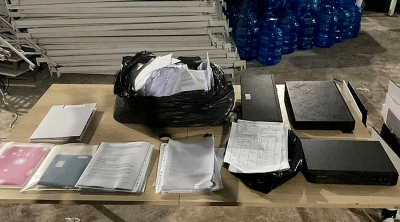The indispensable factors to ensure the success of the NIMP 2030 are foreign investment inflow, large pool of skilled workforce, political stability, policy continuation, business-friendly environment, highly efficient government and well-planned industrial parks, among others.
Prime Minister Datuk Seri Anwar Ibrahim says the New Industrial Master Plan (NIMP) 2030 under the Madani Economy will focus on the creation of value-added industrial development and employment opportunities to help the country expand its middle class, increase the people’s income and deliver the country out of the middle income trap.
Malaysia’s per capita GDP has been lingering around the US$11,000 level for several years due to our loss of export competitiveness stemming from increased production costs while the country fails to make inroads into the value-added market.
The introduction of NIMP 2030 has been a positive move by the government, but to ensure its success, it is imperative that there is continuity in policy implementation that must not be sidetracked by a change of government.
A deterioration in political stability will make it hard for Malaysia to woo foreign investments, and the country must actively nurture the talent needed for the new industries.
Additionally, the government must also provide the necessary incentives and perks in creating a business-friendly environment, besides setting up suitable industrial parks for investors.
These conditions are absolutely necessary to ensure the success of NIMP 2030.
Currently there is a significant trend of global supply chains shifting their operations to Southeast Asia, and as such we must seize this rare opportunity through the introduction of NIMP 2030, with aerospace industry, petrochemical, pharmaceutical, digital economy and E&E identified as key development sectors.
The government has planned to spend a total of RM95 billion over the next seven years to help lift the country’s industrial development while creating job opportunities to boost the rakyat’s income levels.
Other than E&E industry, we may not be in an advantaged position in luring foreign investments in other key sectors highlighted under NIMP 2030.
For example in the aerospace industry and digital economy, we will have to face the challenges of realising industrial vertical integration.
Meanwhile, petrochemical industry might come with environmental concerns, leaving the pharmaceutical manufacturing as probably the only most promising sector for large-scale development.
The prime minister has said that given Malaysia’s advantageous geographical location, the country must strive to strengthen its unique competitiveness against the backdrop of a chaotic global environment.

Geopolitically, Western businesses are increasingly keen to redirect their investments to Southeast Asia, and as a neutral party, Malaysia is well positioned to benefit from the growingly intense rivalry between the United States and China.
The opportunities are always there, but how are we going to harness them?
Honestly there are intrinsic weaknesses in the country’s drive to woo foreign investments, including the shortage of skilled workers and entry-level workers, not to mention our lack of development focus, political instability and poor efficiency on the part of civil servants, among many others. All these are push factors that will send potential investors away.
The NIMP 2030 takes time, and seven years might actually be too short for the master plan to take off. Take Taiwan’s vastly successful semiconductor industry for instance, the island took over four decades from the 1970s to come to what it is today, including the setting up of specialised industrial parks, nurturing the required expertise, and providing the lucrative investment incentives and comprehensive supporting infrastructure.
Taiwan’s semiconductor industry revenue amounted to US$175 billion last year, including $91 billion in foundry revenue and over $40 billion (20% of global total) in IC design.
A crucial factor for the success of Taiwan’s semiconductor industry is the island’s enormous laptop and smartphone assembly capacity, even though some of the parts may not be manufactured locally in Taiwan.
PM Anwar says NIMP 2030 will boost the value of the country’s manufacturing sector by 6.5% to RM587.5 billion in 2030, while creating 3.3 million new job opportunities.
Most importantly, the median manufacturing salary will increase remarkably from RM1,976 today to RM4,510, eventually catapulting Malaysia to the league of high-technology and high-income country.
The NIMP 2030 requires a financial input of RM95 billion, drawn mainly from the private sector, domestic direct investments (DDIs), foreign direct investments (FDIs), private equity, as well as capital and financial markets. Only about 10% of the input will be from government allocations.
On the required expertise for NIMP 2030, it is essential for local higher education institutions to systematically strengthen technology and vocational education in STEM subjects (Science, Technology, Engineering and Maths).
In addition to the nurturing of skilled workers, entry-level workers should also be re-trained to upgrade their skills while foreign expertise is enlisted where the availability of skilled local workforce is inadequate. Most importantly the best talents must be recruited irrespective of race.
The indispensable factors to ensure the success of the NIMP 2030 are foreign investment inflow, large pool of skilled workforce, political stability, policy continuation, business-friendly environment, highly efficient government and well-planned industrial parks, among others.
ADVERTISEMENT
ADVERTISEMENT








































